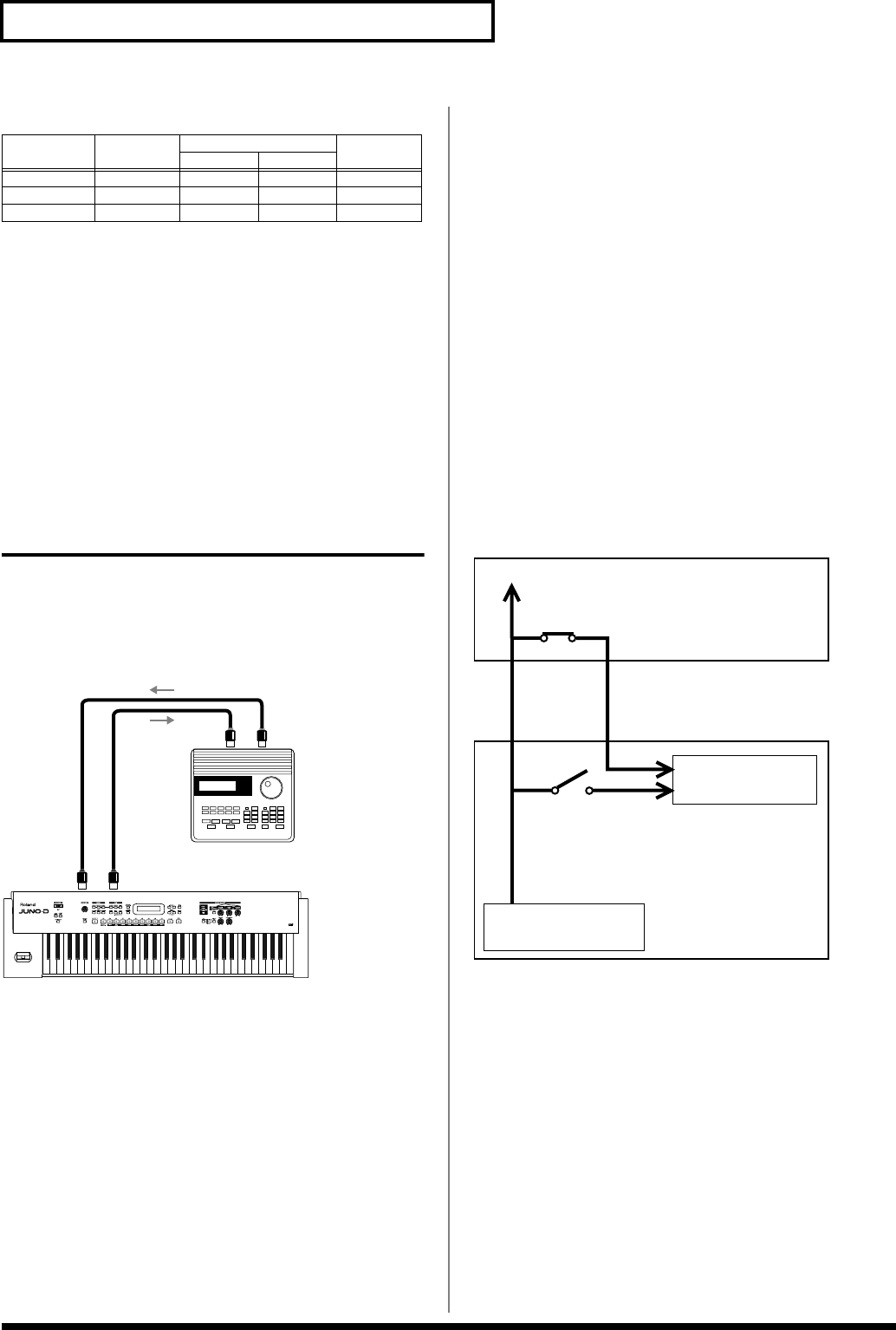
96
Performing with an external MIDI device
Rhythm Set
Using an external MIDI controller to
change the JUNO-D’s tones
Use of the Modulation lever, pedals, and control knobs to make
changes to the JUNO-D’s tones in real time is explained in
“Settings
related to controllers (CONTROLLER)”
(p. 89).
Transmitting Controller numbers set with Modulation Assign (p.
89), Pedal Control Assign (p. 90), and Knob Assign (p. 90) to the
JUNO-D achieves the same effect as working the Modulation lever,
pedals, and knobs.
Recording to an external
sequencer
Now, try using an external sequencer to record your music onto
multiple tracks, and then play back the recorded performance.
Connecting to an external sequencer
fig.r10-20.e
1.
Before starting the connection procedure, make sure that
the power to all devices has been turned off.
2.
After reading “Connecting the JUNO-D to external
equipment” (p. 14), connect an audio device/system or
headphones.
3.
Connect the external MIDI sound device with a MIDI cable as
shown in the figure below.
4.
As described in “Turning on the power” (p. 15), turn on the
power of each device.
Making settings before recording
When recording to an external sequencer, the following steps must
be carried out.
• Set the JUNO-D’s Local Control to OFF (refer to the next section).
• Turn on the external sequencer’s Thru function (p. 97).
• Set the performance (p. 97).
Setting the JUNO-D’s local control to
OFF
The setting that determines whether the keyboard controller section
(p. 40) and sound generator section are separated is referred to as
“
Local Control
.”
When Local Control is on, playing the keyboard will produce sound,
and moving the pitch bend lever will control the pitch.
When Local Control is off, playing the keyboard will not produce
sound, and moving the pitch bend lever will not control pitch. The
sound generator of the JUNO-D will produce sound only in response
to messages received from an external MIDI device.
fig.r10-21.e
The performance data from the JUNO-D’s keyboard controller
section is output from the MIDI OUT connector and recorded by the
sequencer. This performance data is then also output back to the
JUNO-D from the sequencer’s MIDI OUT connector and played by
the JUNO-D’s sound generator.
If Local Control were ON, each note would be played twice; once by
the music data from the keyboard controller section, and once again
by the data sent from the sequencer. In order to prevent such double
triggering, the Local Control setting is turned off to separate the
keyboard controller section from the sound generating section.
* If your sequencer does not have a Thru function, set the JUNO-D’s
Local Control to ON.
1.
Press [SYSTEM] so it is lit.
Group Number Bank Number Program
NumberMSB LSB
User
001–002 086 000 001–002
Preset 001–020 086 064 001–020
GM Rhythm
001–009 120 000 001–057
MIDI IN MIDI OUT
MIDI Sequencer
JUNO-D
Keyboard Controller
Section
While at this setting,
the JUNO-D’s keyboard
and controllers are
disconnected from
the sound generating
section, so they will not
directly control it.
Sound Generating
Section
All performance data
that arrives at MIDI IN
will be output from
MIDI OUT.
Recording
JUNO-D
Sequencer
MIDI IN MIDI OUT
MIDI OUT MIDI IN
Set Local
Control to Off.
Set Thru
Function to On.
JUNO-D_e.book 96 ページ 2004年6月11日 金曜日 午後1時21分
